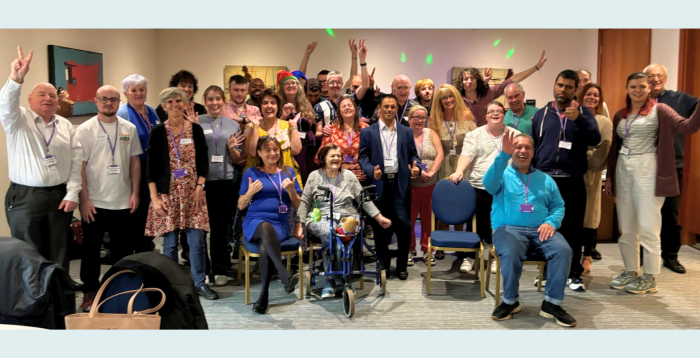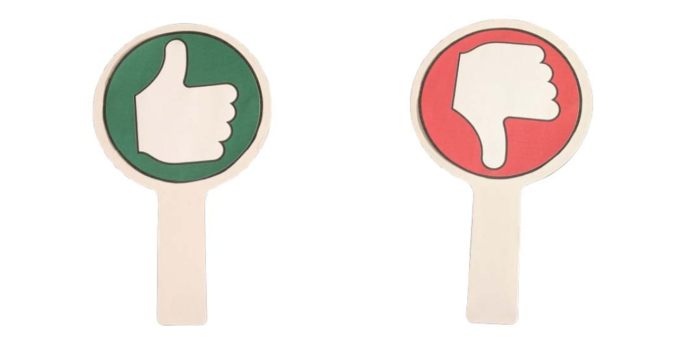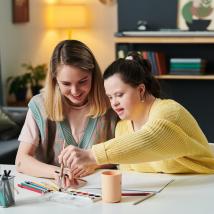Public involvement activities often fail to engage with people with learning disabilities and autistic people. This means the health needs and priorities of these communities remain underserved in research. ARC EoE researchers and local MENCAP organisations have worked together to build an inclusive research partnership. This blog discusses an inclusive event co-designed event with MENCAP members.
This blog is by Amander Wellings, Fred Inglis and Elspeth Mathie, Theme Lead for ARC East of England’s Inclusive Involvement in Research theme on behalf of the CLAPS team.
Working in partnership with two local MENCAP organisations (Barnet MENCAP and Lowestoft and District MENCAP), the NIHR-funded Programme Development Grant Creative Learning Abilities PartnerShips (CLAPS) has used creative engagement and methods to collaborate with people with learning disabilities and autistic people. We were aware of an upcoming NIHR funding call on “Developing Innovative, Inclusive and Diverse Public Partnerships”. We asked our Public Contributors to suggest ideas for a project. The idea for the focus of the project came from existing Public Involvement in Research Groups at the University of Hertfordshire. Co-designing the proposal, the researchers also had open discussions with the MENCAP groups, to ask for their ideas on what they would like to see included in the project. During these conversations, the researchers learned that having parties and celebrations were important to the MENCAP members. Based on this feedback, a key part of the CLAPS project (called a work package) was to have a Celebration Event at the end of the project, bringing together everyone who had been involved in the partnership.
Partnership in action
The celebration event was attended by 37 people from across the CLAPS partnership, including: 16 Mencap members; staff from both MENCAP organisations; a family carer; 6 project Advisory Group members (which included stakeholders from Hertfordshire County Council and people with a learning disability), and university researchers. Together, we celebrated what had been achieved over the project. This included sharing our learning, the different engagement methods used, photos and a short video summary which included voices from the two MENCAP groups. It also included games and activities we used during the project, music and dancing and plenty of time and opportunities to socialise between the two MENCAP groups.

Researchers and MENCAP members from the CLAPS project
“Everyone in the room was equal”
For all the emphasis on co-designing the event, some of the highlights of the day came from moments that were entirely unplanned.
At one stage, the researchers displayed photographs recapping on what we had achieved together. Unprompted, a MENCAP member asked to come to the front of the room, and shared what being involved in the project had meant to her. She was followed by Sunny Saini (Director at Thurrock Lifestyle Solutions) member of both the CLAPS project, and ARC East of England Inclusive Involvement Advisory Groups. These reflections were powerful – not only in their message - but in their spontaneity. We had always been keen to describe our work as a ‘partnership’, in which every voice would be heard. Reflecting on how this moment epitomized our partnership, Amander Wellings, CLAPS Public Co-Lead, felt it demonstrated how “everyone in the room was equal”.
A second moment of spontaneity occurred during the Disco, during a slow-paced song. There were some couples among the MENCAP members, who began to pair-up to dance. One Barnet member commented that they had nobody to dance with, prompting a suggestion from a Lowestoft member that everybody should dance together. Recalling how he initiated this, the Lowestoft member explained how he encouraged everyone to form a circle: “The lovely thing I suggested was that we link arm in arm, and it bought us all together.”
Given that the aim of the celebration had been to bring everyone together, it was wonderful to see this moment in action. Following the event, the team conveyed surprise at how ‘effortlessly’ two MENCAP groups who had never met before had interacted during the event.
“It was fantastic to see both MENCAP groups together, as if they had known each other forever.”
Jacqueline Guyton, Chairperson at Lowestoft and District MENCAP
Top tips for co-designing an inclusive event
As the CLAPS project aimed to work with MENCAP members as ‘equal partners’, it was crucial to involve everybody in the celebration event planning. The team were particularly keen to avoid a ‘researcher-led’ event. The following approaches aimed to actively engage MENCAP members in the celebration, co-designing an inclusive and enjoyable event for all.
Allowing time for planning
Planning any event takes time, so meaningfully co-designing one is going to take much longer! In our first workshop with the MENCAP groups, we introduced the timeline for the 15-month project, including the Celebration Event, which would be at the end. At regular intervals across the project, we revisited planning for the event, discussing with MENCAP members which activities they would like to do, the resources needed, and choosing songs for the playlist. Once we had decided on a plan for the event, we produced a programme in Easy Read to help everyone know what would happen and when during the day.
Using accessible ways to engage different voices
The project engaged with diverse communicators. Some MENCAP members were very vocal when sharing their ideas for the celebration event, and while these contributions were valued, we did not want the perspectives of quieter members, or people with additional communication barriers to be side-lined. To ensure that everyone’s voice could help to shape the event, we introduced ‘thumbs up/ thumbs down’ paddles (image below) into our planning discussions.

‘Thumbs up/ Thumbs down’ paddles used at the CLAPS celebration event
We were pleased to see members ‘challenge’ some suggestions with the ‘thumbs down’ paddle, and felt this invited a more inclusive discussion. For instance, we learnt that while many members wanted event lanyards, some people were uncomfortable with names being on them. We took this feedback on board and used generic lanyards at the event, with optional sticky labels.
Celebrating the abilities of all
As a recurring feature of the CLAPS workshops, it was inevitable that music would play a big part in the project celebration. One of the first questions we were asked about the event was “will there be dancing?” A music/song list was compiled with each MENCAP group. We encouraged the MENCAP members to share their interests and abilities at the event. The celebration was enlivened by a group ‘Bang and Crash’ percussion activity led by Lowestoft MENCAP (who bought along Djembe drums for everyone) and a Disco segment DJ-ed by a MENCAP member.
Moving the partnership forward
As the CLAPS project draws to an end, the research team are keen to explore ways to continue the partnership. However, the experience of coming together in person has brought about some exciting developments for the MENCAP groups. Lowestoft MENCAP are planning to host a visit from Barnet Mencap, who are keen to meet up again, and explore the seaside town. Having thoroughly enjoyed Bang and Crash, Barnet MENCAP are now looking into purchasing their own Djembe drums.
Further findings from the project will shared in due course.
Find out more about the CLAPS project below:
This project is funded by the National Institute for Health and Care Research (NIHR) under its Programme Development Grants (PDG) Programme (Grant Reference Number NIHR205193) and is supported by the National Institute for Health and Care Research (NIHR) Applied Research Collaboration East of England (NIHR ARC EoE) at Cambridgeshire and Peterborough NHS Foundation Trust. The views expressed are those of the author(s) and not necessarily those of the NIHR or the Department of Health and Social Care.
